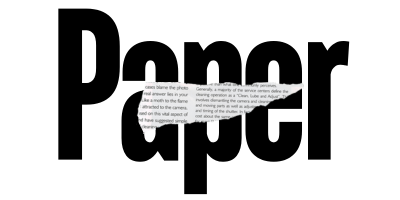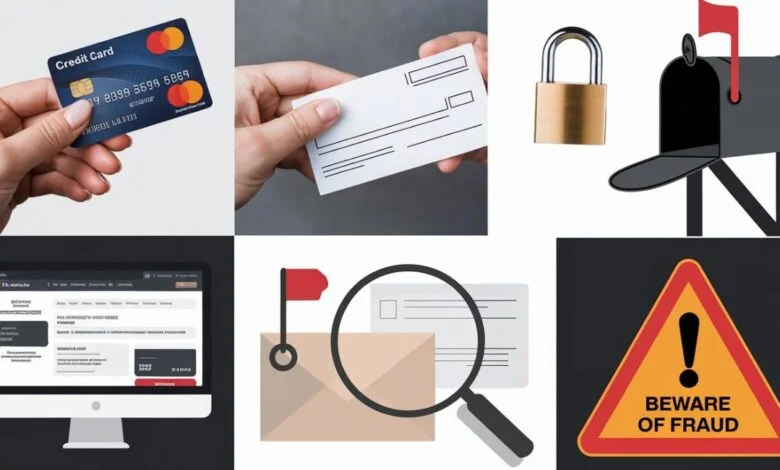Introduction to Stolen Mail Checks Credit Cards
Did you know that in 2023, over 15 million Americans fell victim to identity theft, resulting in billions of dollars in losses? One major contributor to these crimes is something as simple as stolen mail. What might seem like a harmless missing letter could lead to serious financial fraud, especially when it involves checks and credit cards. Stolen mail is often the starting point for credit card theft and identity fraud, making it a serious issue that needs to be addressed.
This article will dive into the dangers of stolen mail, how it can lead to credit card fraud, and, most importantly, how you can protect yourself. We will also outline the steps to take if you suspect that your mail has been stolen and provide practical tips to safeguard your identity.
How Stolen Mail Can Lead to Credit Card Theft
Check Fraud: A Hidden Danger in Your Mailbox
Checks sent through the mail are a common target for thieves. Criminals can steal your checks and alter them to cash or use them for fraudulent purchases. In some cases, they might forge your signature or change the payee’s name. Even a blank check sent for a legitimate reason, such as paying a bill, can become a tool for fraud in the wrong hands.
Once a check is stolen, it becomes a gateway to your financial details, allowing criminals to drain your bank account. For businesses that deal in checks, the consequences can be even more severe, as a single stolen check can lead to thousands of dollars in unauthorized transactions.
Credit Card Statement Theft: A Risk to Your Identity
Credit card statements contain a wealth of personal information, from your account number to your billing address. If thieves get their hands on your statement, they can use this data to commit identity theft. With enough information, criminals can open new credit card accounts in your name, run up debt, and leave you to deal with the financial fallout. Worse, they can even redirect your mail to a different address to avoid getting caught.
Phishing Scams: Stolen Information in the Wrong Hands
Once a thief has access to your personal information, they can use it to create convincing phishing emails. These scams often impersonate legitimate companies, tricking you into revealing even more sensitive information like passwords or credit card numbers. A phishing email crafted with stolen details can be very hard to distinguish from real correspondence, making it a dangerous tool for identity theft.
Consequences of Credit Card Theft
Financial Loss: The Immediate Impact
The most obvious consequence of credit card theft is financial loss. Whether criminals use your credit card to make purchases or open new accounts in your name, you could end up facing large amounts of unauthorized charges. Even though many credit card companies offer fraud protection, the hassle of reversing charges and proving the theft can take time, leaving you temporarily out of pocket.
Damaged Credit Score: Long-Term Consequences
In addition to financial loss, credit card theft can severely damage your credit score. If a thief runs up a large debt in your name or misses payments on fraudulent accounts, it will reflect poorly on your credit report. This can make it harder for you to get loans, mortgages, or even new credit cards in the future.
Emotional Stress: The Invisible Toll
Beyond the financial damage, credit card theft can take a significant emotional toll. Victims often feel violated, anxious, and stressed as they deal with the fallout of identity theft. It can take months or even years to resolve the issue fully, leaving you constantly worried about your financial security.
Protecting Yourself from Stolen Mail
Secure Your Mailbox
One of the most effective ways to prevent mail theft is by securing your mailbox. Use a locking mailbox that only you can access, or ensure that your mailbox is located in a safe, secure area. If you’re going on vacation, ask a trusted neighbor to collect your mail or have the postal service hold it until you return.
Monitor Your Accounts Regularly
Regularly checking your bank and credit card statements is crucial for spotting suspicious activity early. The sooner you notice a discrepancy, the faster you can act to prevent further fraud. Consider signing up for alerts that notify you of unusual transactions or changes to your account.
Shred Sensitive Documents
Before discarding any document containing personal or financial information, make sure to shred it. This includes old credit card statements, bank documents, and even pre-approved credit card offers. Shredding these items ensures that criminals can’t retrieve your information from your trash.
Consider a Mailbox Rental
For added security, consider renting a secure mailbox at a local post office or a private mail service. These services offer safe and monitored mail delivery, which significantly reduces the risk of your mail being stolen.
Steps to Take if Your Mail is Stolen
Report the Theft Immediately
If you suspect that your mail has been stolen, the first step is to report it to the postal service. In the U.S., you can file a complaint with the Postal Inspection Service, which investigates mail theft cases. They may be able to track down your missing mail or help prevent further theft.
Contact Your Credit Card Companies
If your credit card or statement was part of the stolen mail, contact your credit card companies right away. They can freeze your account to prevent further unauthorized transactions and issue new cards. Be sure to explain the situation in detail so they understand the potential risk.
Place a Fraud Alert on Your Credit Report
You can place a fraud alert on your credit report through the major credit reporting agencies (Equifax, Experian, and TransUnion). A fraud alert makes it harder for identity thieves to open new accounts in your name because businesses must verify your identity before approving credit.
Monitor Your Accounts Closely
After reporting the theft and securing your credit, it’s important to closely monitor your financial accounts for any signs of suspicious activity. Even if you’ve taken precautions, there could still be unauthorized charges or new accounts opened in your name. Act quickly if you spot anything unusual.
YOU MAY ALSO LIKE: 646-569-9288 Explained: Area Code, Owners, and Lookup Tips
Conclusion
The theft of mail, checks, and credit cards is a serious issue that can lead to devastating financial and emotional consequences. From check fraud to identity theft, criminals can use stolen mail to wreak havoc on your finances and personal information. However, by taking steps to secure your mailbox, monitor your accounts, and act quickly in the event of theft, you can protect yourself from the worst outcomes.
FAQs
1. How can stolen mail lead to credit card fraud?
Stolen mail can give thieves access to your personal information, checks, or credit card statements, which they can use for identity theft or fraudulent purchases.
2. What should I do if my checks are stolen from the mail?
Immediately contact your bank to stop payment on the stolen checks and monitor your account for unauthorized transactions.
3. How can I prevent my mail from being stolen?
You can secure your mailbox with a lock, shred sensitive documents, monitor your accounts, and consider using a PO Box for important mail.
4. What are the consequences of credit card theft from stolen mail?
Credit card theft can lead to financial loss, damaged credit scores, and emotional stress as you work to resolve the fraudulent activity.
5. Who should I report stolen mail to?
Report stolen mail to the postal service (like the U.S. Postal Inspection Service) and notify your bank or credit card company if financial documents were involved.











